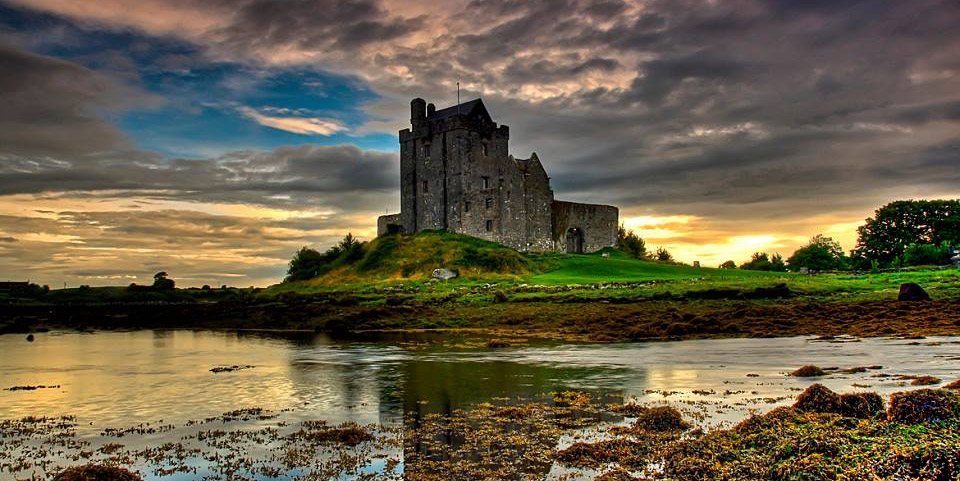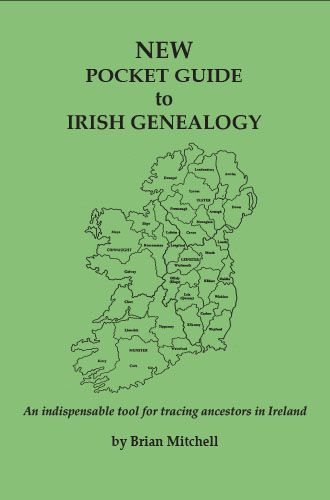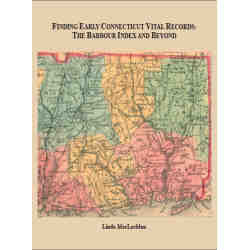
Brian Mitchell’ New Pocket Guide to Irish Genealogy is a concise, use-friendly overview of tracing ancestors in the Emerald Isle and throughout the Irish diaspora. Author Brian Mitchell makes excellent use of case studies as well as his considerable experience as a genealogist and manager of an Irish genealogy center to explain the basics of his subject in little more than 100 pages. To give our readers a flavor of Brian’s approach to the subject, here is the Preface to the New Pocket Guide reprinted in its entirety:
“If you understand a man the first time you meet him, there isn’t much in him to understand. And you won’t understand Robert McCook at the start, for he is an Irishman, and a deep one at that. A big lump of a man – 6 feet 2 inches in his socks – broad, thick-chested, going bald on top. You’d pick him out as a farmer if you met him on board ship or in a café in Paris. He looks the part.” This is how the Dairy Bulletin of June 1910 described Robert McCook, then the owner of a big herd of Jersey milking cows in Brisbane, Australia, but formerly a farmer’s son from Garvagh, County Derry. With this information I began my research into the McCook families of Ireland, Australia, and New Zealand, and what a story it turned out to be.
“Two Sunday afternoon chats around the fireside with 87-year-old Robert Graham, who now owns the McCook farm in Garvagh, enabled me to virtually tie up the McCook family tree in Ireland for descendants of McCooks living in New Zealand and Australia. Robert, leaning slightly forward on his walking stick, his eyes bright with recollection, recalled for a total of six hours the McCook family history.
“The identification of a McCook gravestone in the graveyard attached to the old First Garvagh Presbyterian Church (now demolished) and a search of the baptism registers of that church and of the 1901 census returns for the Garvagh area allowed me to complete the McCook story. It began around 1860 when Alexander McCook bought a farm at Edenbane, near Garvagh. He married and raised a large family, with the six eldest sons, Archibald, Alexander, Graham, William, James, and John, immigrating to Queensland, Australia. From John were descended the “Fighting McCooks” of New Zealand. John had arrived in Brisbane in January 1866, and from there he turned to farming in Auckland, New Zealand. He had 12 children, including four boys, Peter, John, William, and James, who all served in the New Zealand forces in World War One and were either wounded or gassed, three in France and one at Gallipoli in 1915.
“Alexander’s youngest son, Robert, the subject of the article in the Dairy Bulletin, at first stayed behind to farm the family farm at Edenbane, but on the death of his mother, Jane, in 1881 he sold the family farm and in 1883 followed his six elder brothers to Queensland. There were now no male descendants of Alexander McCook in the Garvagh area, but in the 1890s Archibald, the eldest son, returned and bought a farm at the Grove, Moyletra Toy, an adjoining townland to Edenbane. He married and Archibald’s 13 children were baptized at First Garvagh Presbyterian Church. In the early 1900s five of Archibald’s sons, Alexander, James, William, John, and Robert emigrated to the gold mines of Kalgoorlie in Western Australia. The youngest son, Hugh, remained and farmed at the Grove. Hugh married Robert Graham’s sister, but they had no children. With Hugh’s death, on 24 April 1960, the McCook surname died out in the Garvagh area. The McCook farmstead still stands, a solid two-story house, which at one time was home to 13 children. It now lies empty and derelict, only Robert Graham’s cattle being in evidence, and adjoining the house is a substantial walled garden with tree stumps inside of a one-time orchard. In its day this was obviously a fertile farm. By contrast the McCooks in New Zealand and Australia are flourishing.
“This one example sums up for me what makes genealogy and the study of one’s family tree such an absorbing and fascinating pastime. The attraction for me lies in building up a picture – piece by piece – of your ancestry utilizing people’s memories and historical records. The detective work in building up a family tree is just as rewarding as the identification of a family line.
“The basic aim of this book is to overcome the perception that genealogy is only for the experts. The piecing together of one’s family tree is not only enjoyable but relatively straightforward. I have found through many years’ involvement in genealogy as a tutor and genealogist [I started work as a genealogist in 1982] that the examination of only seven major records will throw quite detailed light on most peoples’ Irish ancestry. The records being:
- Civil Registers of Births, Marriages and Deaths
- Church Registers of Baptisms, Marriages and Burials
- Gravestone Inscriptions
- Wills
- 1901 and 1911 Census Returns
- Mid-19th-century Griffith’s Valuation
- Early-19th-century Tithe Books
“With these records most people should be able to build up a family tree going back six or seven generations on most family lines. This is a substantial number of ancestors and an equally substantial number of interesting family stories, as by the seventh generation every individual will be directly descended from 64 great-great-great-great grandparents. I intend to show how to initiate a family tree search in Ireland, and how to make the best use of the seven major record sources to fill in family detail.
“There are obviously more than seven record sources in Ireland that are genealogically useful, and many of them are briefly described in this book. This doesn’t affect my basic premise that for most people the research of seven major records is all that is required to build up a detailed family tree.
“The five major record offices in Ireland that are referred to throughout this book are:
- General Register Office
- General Register Office for Northern Ireland
- National Archives of Ireland
- National Library of Ireland
- Public Record Office of Northern Ireland
“Contact details for each of these institutions will be found in the Insights and Strategies section at the back of this book together with additional information on the importance/value of placenames, surnames, passenger lists and DNA testing in researching Irish family history. In addition, in this section I have also summarized courses of action for tracing Irish and Scots-Irish ancestors together with case studies to illustrate the process of tracing both an Irish and a Scots-Irish ancestor.”





Mr. Mitchell – I have been working on my roots for nearly 60 years. You posted a comment on the Norway-Heritage website on 16 November 2009 that said “Ole Jacobsen Nybak used the name Ole J. Runden after arrival in the U.S.” It was posted on a passenger list for the S/S Argo that sailed in 1868. I have the trunk they sailed with – but never had heard of the use of Nybak with him – although its on the trunk. Could you help me with the source of your information? thank you very much!
Hello Curtis. In this instance the Brian Mitchell who posted this information on Norway-Heritage website is not me, so I hold no information that will assist you.